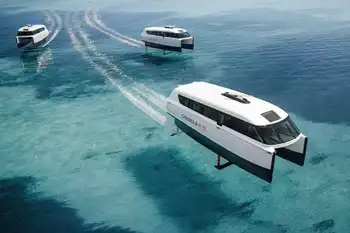Energy-starved Pakistan seeks wind investors
ISLAMABAD, PAKISTAN - Pakistan this year expects to finalize four wind power deals worth $500 million to exploit a renewable resource that has been barely tapped in a country with a yawning gap between power capacity and demand.
The country suffers chronic power cuts that inflame public anger and stifle industry, a crisis seen by analysts as a test for President Asif Ali Zardari. Daily shortfalls are 4,500-5,000 megawatts MW, Water and Power Ministry figures show.
But the South Asian nation's coastal belt holds particular promise for wind power, with a potential of producing 50,000 megawatts, according to the U.S. National Renewable Energy Laboratory.
Arif Alauddin, chief executive of Pakistan's Alternative Energy Development Board AEDB, said talks were underway with six Pakistani investors to build wind farms.
"We have reached a stage I can say at least four deals will be finalized this year and production would start next year," he told Reuters. "The worth of these deals will be $500 million."
They would encompass four 50 MW plants with expected completion by the end of 2011, he said.
AEDB is trying to boost local private investment in alternative energy by offering incentives and access to wind turbine makers and operators such as Siemens, Nordex SE, Coolwind, SWEG and General Electric.
Nordex in March agreed to supply FCC Energy Ltd., a local company, with turbines for a 50 MW farm in the southern Sindh province.
To attract private investors, Alauddin said the government is guaranteeing an annual rate of return of up to 18 percent and will pay power producers if the wind blows below an annual average of 7.3 metres per second.
AEDB has already allocated land for 18 independent power producers for wind power projects of 50 MW each. The U.S. Agency for International Development has plans to help Pakistan develop wind farms to generate 300 MW by the end of 2014.
"You cannot expect changes overnight. It'll take time. But we believe some 10,000 MW would be coming through wind in the next five to 10 years," Alauddin said.
AEDB is carrying out national wind mapping for possible farms in other locations such as southwestern Baluchistan and northwestern Khyber-Pakhtunkhwa.
Pakistan is also looking at solar energy as another renewable option, and the central bank is offering to finance 80 percent of local solar investments. The government has removed duty and sales taxes on solar technology imports.
Sixty-five percent of cash-strapped Pakistan's electricity comes from oil and gas and 30 percent from hydroelectric sources. An additional 5 percent comes from two nuclear plants.
Out of total imports of $31.48 billion in the last 10 months, oil imports were $8.3 billion, government figures show.
"We've got to turn around our energy mix. We cannot afford it," said Mohammad Khaid, director general of the state-run Pakistan Electric and Power Company PEPCO.
Pakistan aims to add at least 2,000 MW by December from seven rental power plants and one independent producer.
Related News

27,000 Plus More Clean Energy Jobs Lost in May
WASHINGTON - As Congress this week begins debating economic stimulus support for the energy industry, a new analysis of unemployment data shows the biggest part of America's energy economy - clean energy - lost another 27,000 jobs in May, bringing the total number of clean energy workers who have lost their jobs in the past three months to more than 620,500.
While May saw an improvement in new unemployment claims over March and April, the findings represent the sector's third straight month of significant job losses across solar, wind, energy efficiency, clean vehicles and other industries. With coronavirus cases once again…




